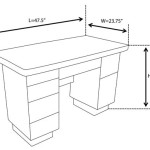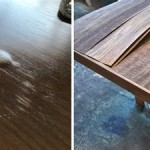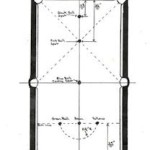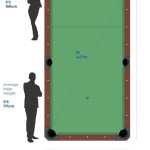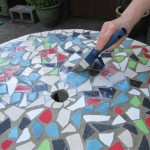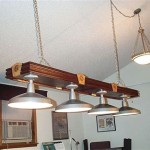Round Formal Dining Table and Chairs: A Comprehensive Guide
The round formal dining table and chairs represent a classic and versatile choice for homeowners seeking to create an elegant and inviting dining space. This configuration fosters a sense of intimacy and encourages conversation, making it ideal for both intimate gatherings and larger dinner parties. Understanding the nuances of selecting the right round dining table and chairs, considering factors such as size, material, style, and comfort, is crucial for achieving a harmonious and functional dining area.
Space Considerations and Sizing
Before selecting a round formal dining table, carefully assess the dimensions of the dining room. Adequate space around the table is paramount for comfortable seating and easy movement. A general guideline is to allow a minimum of 36 inches between the edge of the table and any walls or other furniture. This clearance space enables chairs to be pulled out comfortably and allows individuals to navigate the room without feeling cramped. For smaller dining rooms, a round table can prove advantageous as it occupies less visual space than a rectangular table and can often be more easily accommodated.
The diameter of the round table dictates the number of people it can comfortably seat. A table with a diameter of 48 inches can typically accommodate four people, while a 60-inch table comfortably seats six. For larger gatherings, consider a table with a diameter of 72 inches or larger, which can seat eight or more individuals. It is important to remember that these are general guidelines and the actual seating capacity may vary depending on the style of the chairs and the personal space preferences of the diners. Furthermore, the table base design can impact legroom, so inspecting the base construction is prudent before committing to a purchase.
When measuring the space, also consider the placement of other furniture in the room, such as buffets, sideboards, or china cabinets. These pieces should be strategically positioned to complement the table and chairs without obstructing pathways or creating a cluttered appearance. Thoughtful planning ensures that the dining room remains functional and aesthetically pleasing.
Material Selection and Durability
The choice of materials for both the round dining table and chairs significantly impacts the overall aesthetic and durability of the dining set. Wood remains a popular choice for formal dining tables due to its timeless appeal and versatility. Solid wood tables, such as those crafted from oak, maple, cherry, or walnut, are known for their strength and longevity. Veneer tables, constructed with a thin layer of wood over a core material, offer a more cost-effective alternative while still providing a refined appearance. When selecting a wood table, consider the grain pattern and finish, ensuring that it complements the existing decor of the dining room. Also, factor in the maintenance requirements of different wood species; some may require regular polishing or oiling to maintain their luster.
Glass-top round dining tables offer a modern and sophisticated aesthetic. Glass is easy to clean and maintain, and it allows light to pass through, creating a sense of openness in the room. However, glass can be prone to scratches and fingerprints, requiring frequent cleaning. The base of a glass-top table is often made of metal, wood, or a combination of both. Metal bases, such as those made of stainless steel or wrought iron, provide a contemporary and industrial look. Wood bases offer a warmer and more traditional feel.
For the dining chairs, a variety of materials are available, including wood, metal, upholstered fabrics, and leather. Wood chairs offer a classic and timeless look, while metal chairs provide a more modern and industrial feel. Upholstered chairs, with fabric or leather coverings, offer enhanced comfort and can add a touch of luxury to the dining room. Fabric choices range from durable cotton and linen to more luxurious velvet and silk. Leather chairs are known for their durability and sophisticated appearance. When selecting upholstered chairs, consider the stain resistance and cleanability of the fabric or leather, especially if young children or pets are present.
Style and Design Considerations
The style and design of the round formal dining table and chairs should complement the overall aesthetic of the home. A wide range of styles are available, from traditional and formal to contemporary and minimalist. Traditional dining tables often feature ornate carvings, intricate details, and rich finishes. These tables are typically paired with upholstered chairs with classic silhouettes and embellishments. Contemporary dining tables tend to have simpler lines, clean designs, and minimalist details. These tables are often paired with chairs made of metal, wood, or a combination of both, with sleek and modern profiles.
The choice of chair style is crucial for creating a cohesive and harmonious dining space. Chairs with arms offer enhanced comfort and a more formal appearance, while armless chairs provide a more casual and versatile seating option. The height of the chairs should be proportionate to the height of the table, ensuring that diners can sit comfortably without feeling too high or too low. The backrest of the chair should provide adequate support and comfort.
The finish of the table and chairs should also be carefully considered. A matching finish creates a unified and cohesive look, while contrasting finishes can add visual interest and dimension. For example, a dark wood table can be paired with light-colored upholstered chairs to create a striking contrast. Metallic accents, such as brushed gold or silver, can add a touch of glamour and sophistication. The color palette of the dining room should also be taken into account when selecting the finish of the table and chairs. Neutral colors, such as beige, gray, and white, are versatile and can easily be incorporated into a variety of decor styles. Bold colors, such as red, blue, and green, can add a pop of personality and create a more vibrant and energetic dining space.
Furthermore, consider the shape and design of the table base. Pedestal bases are common for round tables, providing stability and ample legroom. Four-legged bases offer a more traditional look. The design of the base can range from simple and understated to ornate and decorative. Choose a base that complements the overall style of the table and the chairs.
Lighting plays a significant role in setting the ambiance of the dining room. A chandelier or pendant light fixture suspended above the table can create a focal point and provide ample illumination. Consider the size and style of the light fixture, ensuring that it complements the table and chairs. Dimmable lighting allows for adjusting the brightness to create the desired mood. Sconces or wall lights can provide additional ambient lighting and add depth to the room.
Accessories, such as tablecloths, placemats, and centerpieces, can enhance the aesthetic appeal of the dining table. A tablecloth can add a touch of elegance and formality, while placemats provide a more casual and contemporary look. A centerpiece, such as a floral arrangement, a candle display, or a decorative bowl, can add visual interest and personality to the table. Choose accessories that complement the style and color palette of the dining room.
The choice of tableware, including plates, glasses, and cutlery, should also be considered. Formal dining requires more elaborate tableware, typically including fine china, crystal glasses, and silver cutlery. Casual dining allows for more relaxed and informal tableware, such as stoneware plates, glass tumblers, and stainless steel cutlery. The tableware should complement the style of the table and chairs and the overall aesthetic of the dining room.
Ultimately, the selection of a round formal dining table and chairs is a personal decision based on individual preferences, space constraints, and budget. By carefully considering the factors outlined above, homeowners can create a dining space that is both functional and aesthetically pleasing, providing a welcoming and enjoyable environment for family and friends.
The key to a successful dining room design lies in creating a harmonious balance between form and function. The round dining table should be proportionate to the size of the room, the chairs should be comfortable and stylish, and the overall aesthetic should reflect the homeowner's personal taste. With careful planning and attention to detail, a round formal dining table and chairs can transform a dining room into a cherished space for gathering and creating lasting memories.
Regular maintenance and care will help to preserve the beauty and longevity of the round dining table and chairs. Dusting the table and chairs regularly, cleaning spills promptly, and protecting the furniture from direct sunlight will help to prevent damage and maintain its appearance. Upholstered chairs should be vacuumed regularly to remove dust and debris. Leather chairs should be conditioned periodically to prevent cracking and drying. With proper care, a round formal dining table and chairs can provide years of enjoyment and become a cherished heirloom.

Acme 66840 Versailles Round Formal Dining Room Set In Platinum Dallas Designer Furniture

Elegant Dining Room With Round Dinette Set

875355 Massa Formal Dining Room Set With Round Table Von Furniture Free

184169 Lisburn Round Dining Set Von Furniture Free

Interior Design 17 Classy Round Dining Table Ideas Elegant Room Luxury

Furniture Of America Cm3319rt Bellagio Formal Dining Room Set With Round Table Dallas Designer

Medieve Cherry Round Dining Table

505030 Walther Round Formal Dining Room Set Von Furniture Free

Deryn Park Oval Dining Table Homelegance In Tables Walking Into The Room That Is Occ Round Sets

60 Round Formal Dining Table With 6 Chairs Mcferran Free Delivery


